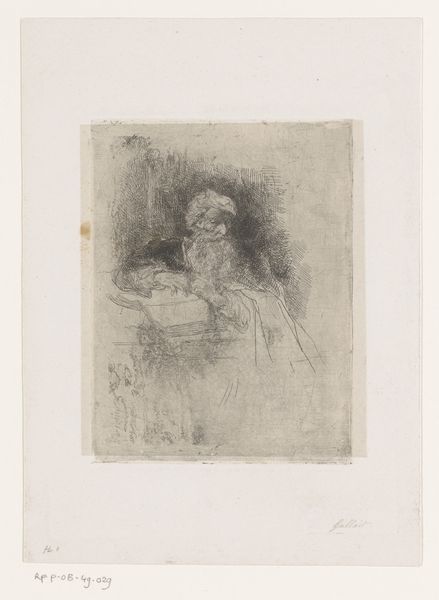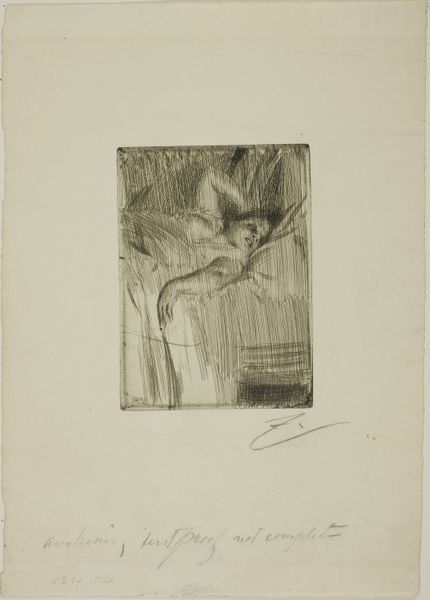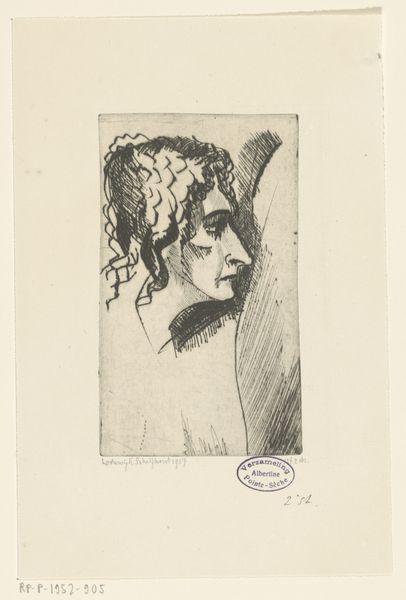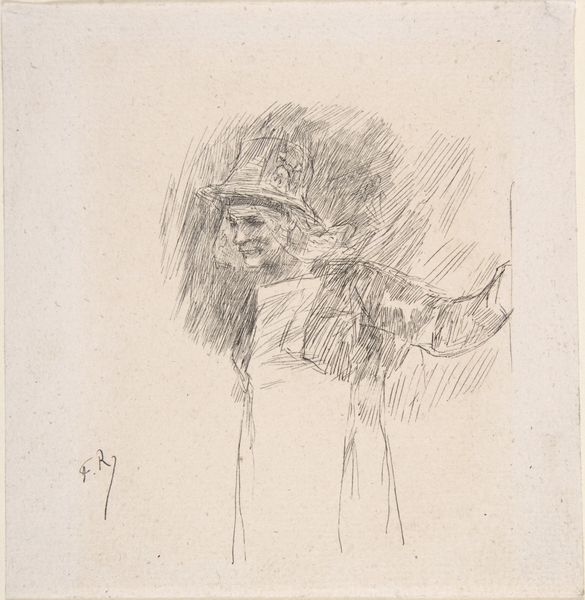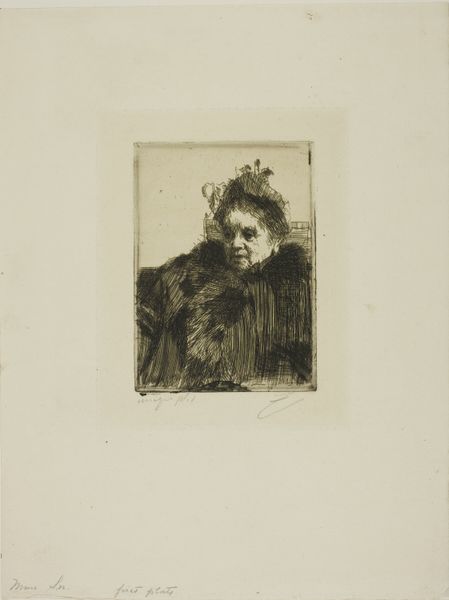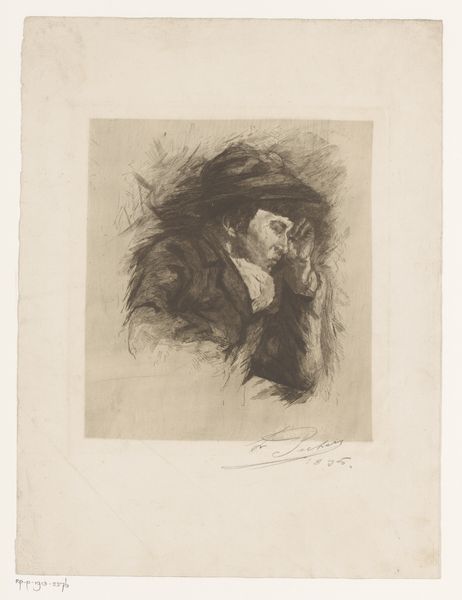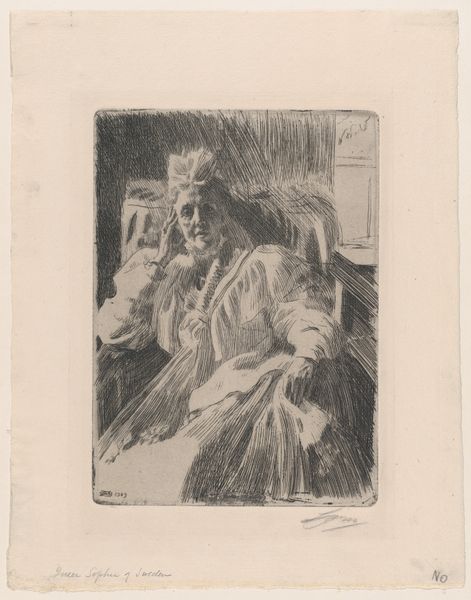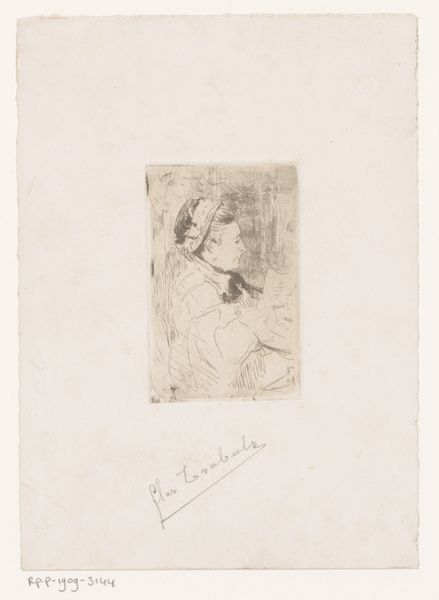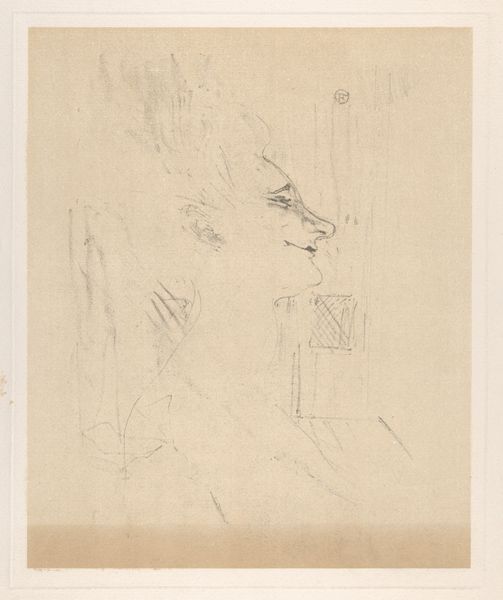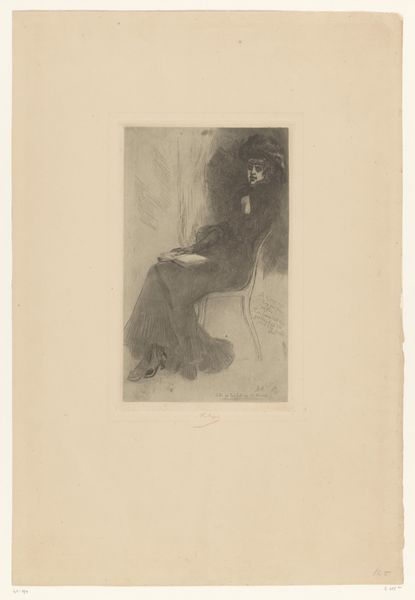
drawing, print, etching
#
portrait
#
pencil drawn
#
drawing
# print
#
etching
#
realism
Dimensions: Plate: 8 7/16 × 6 5/16 in. (21.5 × 16 cm) Sheet: 12 7/8 × 10 1/16 in. (32.7 × 25.5 cm)
Copyright: Public Domain
Editor: This is "A Ring," an etching and print created by Anders Zorn in 1906. It’s a striking portrait – it makes me think about… I don't know, the quiet concentration of domestic life. What do you see in this piece, particularly thinking about its creation as an etching? Curator: As a materialist, I immediately think of the process and materials that shaped this image. Zorn's choice of etching – a printmaking technique relying on acid to bite into a metal plate – isn't arbitrary. Consider the labor involved. He carefully prepared the plate, drew through the waxy ground, submerged it in acid, and finally, printed it. Editor: So, the labor affects the aesthetic? Curator: Precisely! Think of how the marks created by the acid give the portrait a certain… texture, an almost rough quality despite its delicate details. How does this contrast with the more polished or 'refined' forms we often associate with early 20th-century portraiture? Also, who do you think this lady is? Editor: I'm not sure, but her attire indicates a certain social status, I suppose. So the etching, which feels almost industrial compared to drawing, could be making a statement about class? Curator: Indeed. Zorn challenges traditional boundaries. He elevates printmaking—often considered a craft or a means of mass production—to high art. In this way, it encourages us to analyze this artwork through the lenses of labor, materiality, and consumption within the context of early 20th-century society. Are we celebrating individuality here or class structure? Is he documenting it? Is this for sale, affordable or not, for what audience? These are relevant considerations. Editor: That's fascinating; I hadn’t thought about it in terms of the material making a commentary on class. Now I’m wondering about his choice to use etching to portray someone who might’ve lived a leisurely, rather than industrious, existence. Curator: Exactly. By considering the 'how' of its creation, we begin to unravel deeper meanings within the image itself. The material processes are rarely neutral; rather, they're loaded with social and economic implications.
Comments
No comments
Be the first to comment and join the conversation on the ultimate creative platform.


